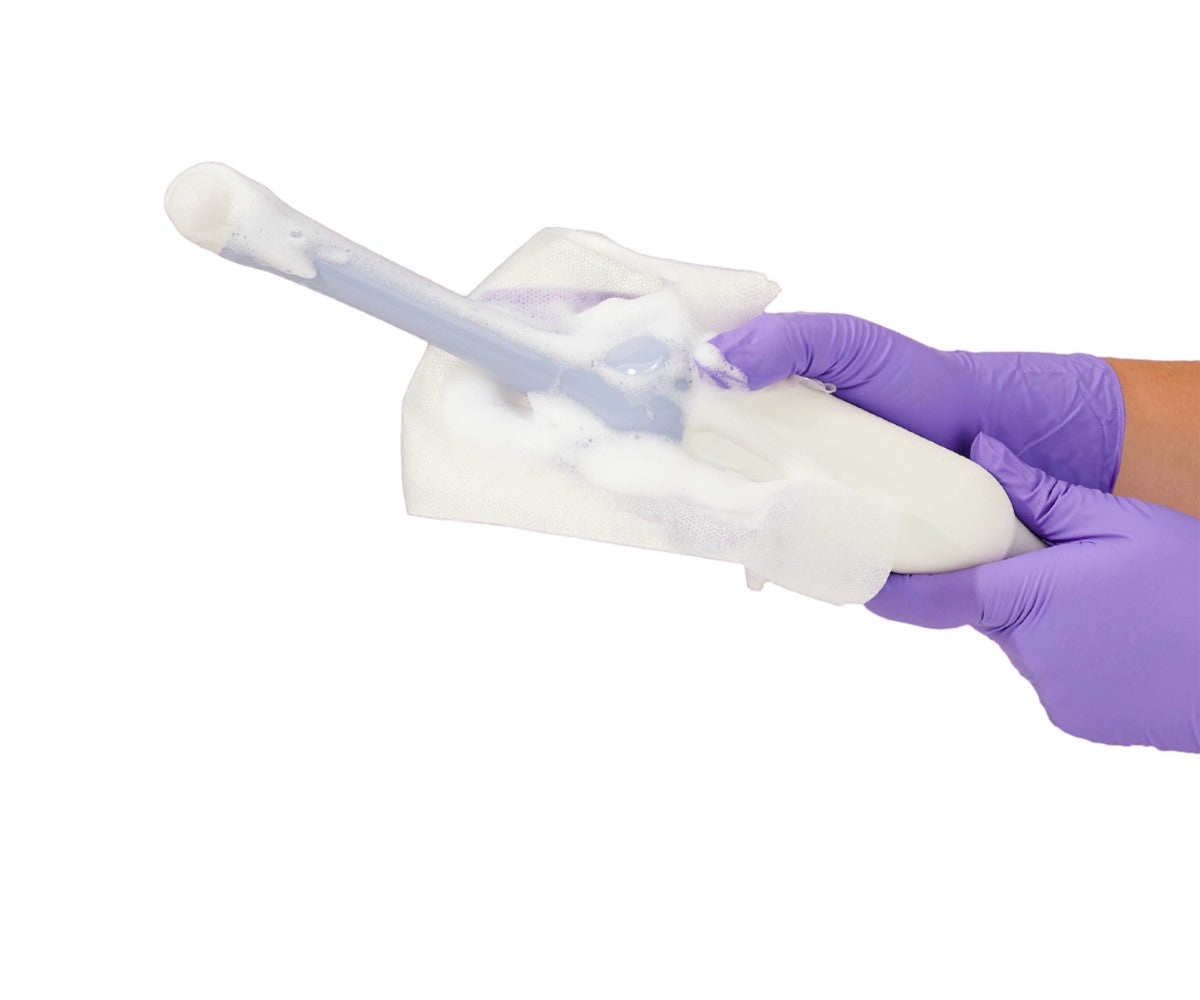From the foundational principle of hand hygiene to hospital disinfection protocols, medical practices have several cost-effective infection prevention strategies at their disposal to reduce the risk of healthcare-associated infections.
As facilities across the world face the threat posed by COVID-19, infection preventionists and medical staff in these settings have been adopting stricter guidelines for patient safety. The CDC even recently explained the difference between cleaning and disinfection to stress the importance of using them in tandem and understanding their respective roles in hospital disinfection and as infection prevention strategies.
To better understand the strategies and process improvement tactics medical practices can adopt to improve patient safety, four experts discuss the 10 best strategies for infection prevention and control.
Hand hygiene
According to the CDC, the first measure all medical staff can take to reduce the risk of spreading healthcare-associated infections is to regularly and thoroughly wash their hands and forearms. This is particularly true for surgical staff who are encouraged to wash their hands and forearms before a procedure and then put on sterile gloves, in accordance with the CDC guidelines for infection control. Steven J. Schweon, RN, MPH, infection prevention consultant and member of The Society for Healthcare Epidemiology of America, suggests the "clean in, clean out" approach, which consists of cleaning or disinfecting staff’s hands and equipment on the way into the patient's room and on the way out again.
Environmental hygiene
According to J. Hudson Garrett, PhD, MSN, MPH, FNP-BC, CSRN, VA-BC, senior director for clinical affairs at PDI, one of the most common sources of healthcare-associated infections are environmental surfaces. He notes that certain types of microbial bacteria are capable of surviving on environmental surfaces for months at a time. Human coronaviruses, such as COVID-19, have also been found to be capable of surviving on environmental surfaces for days. When clinicians or patients come into contact with these contaminated surfaces, bacteria can be transmitted, causing infection. As a result, it is important for the environment to be kept clean and disinfected. Both cleaning and disinfection play different but important roles in hospital disinfection. Medical practices can use a variety of medical-grade disinfection sprays and wipes to fight bacteria, such as the Parker Protex disinfectant spray which is effective against COVID-19. Garrett suggests the inclusion of patients and their families in infection prevention protocols as he believes both groups have become the biggest advocates for patient safety. Medical practices should also seek to involve multidisciplinary environmental hygiene teams in infection prevention protocol and strategy meetings. Irena L. Kenneley, PhD, APRN-BC, assistant professor at the Frances Payne Bolton School of Nursing at Case Western Reserve University and member of the Association for Professionals in Infection Control and Prevention, says that regularly meeting with environmental services and sharing data allows them to relate housekeeping tasks with the spread of infection and facilitates maximum hygiene standards.
Screening and cohorting patients
Siew Lee Grand-Clément, an expert on robust process improvement at the Joint Commission Center for Transforming Healthcare, says that the consistent screening of patients should form a part of the preoperative health evaluation process. Patients found to have disease or infection must then be treated prior to surgery or any procedure that may foster the spread of healthcare-associated infections. Furthermore, it is essential that facilities place patients suffering from the same infection or disease in one designated area. Doing so prevents the spread of infection by patients coming into contact with non-essential medical staff, other patients, as well as visiting family. In the case of the current COVID-19 pandemic, isolating and treating patients in a designated area has been used to reduce the risk of transmission. "This is essential to ensure that cross infections do not happen," says Dr. Kenneley. If infected patients are not properly isolated, then infections can be more easily spread from one patient to another if they are being treated in the same area, with the same medical staff and shared equipment. The CDC notes that some infectious agents can also be airborne. Thus, healthcare facilities must evaluate whether medical staff are adhering to infection-specific protocols, Dr. Kenneley advises.
Vaccinations
Infection preventionists note that medical staff themselves may sometimes be the cause of the spread of healthcare-associated infections. Due to their close contact with patients with different diseases, clinicians may contract infections, according to the CDC. This means that medical practices should routinely administer recommended vaccinations to their staff. “Keeping healthcare professionals healthy pays dividends," says Schweon. Vaccinations should be considered a part of an organization’s infection prevention strategy. Doing so results in decreased transmission risk to co-workers and patients, which in turn leads to a higher level of patient safety.
Surveillance
Through surveillance, organizations should gather data regarding infection patterns at their facility. They should also regularly assess current infection prevention protocols. Having a robust infection surveillance program helps organizations measure outcomes, assess processes of care and promote patient safety, says Schweon. Sharing the data that the infection surveillance program gathers is the next step. "Communicate, display and discuss all process and outcomes measures with all stakeholders," says Dr. Kenneley.
Antibiotic stewardship
The Association for Professionals in Infection Control and Epidemiology reports that the misuse and overuse of antibiotics can put patients at a risk of contracting infections. Their inappropriate use may also lead to patients becoming resistant to some drugs. Thus, if those patients contract a healthcare-associated infection, it becomes more difficult to treat them and the risk of the infection spreading throughout the facility increases. Schweon recommends establishing a program to assist with appropriate antibiotic selection and dosing. He says doing so helps improve patient outcomes and reduce the number of adverse effects such as C. difficile infection and antibiotic toxicity.
Care coordination
Grand-Clément stresses how breakdown in communication amongst various care providers during surgical preparation, planning, and postoperative care can lead to surgical site infections which could’ve been avoided. Healthcare organizations must work to minimize situations where a certain infection prevention process is overlooked by a department that assumes another one has already completed it. Hospital disinfection protocols must be strictly followed by all departments to reduce the risk of surgical site infection. "Activities must be timed and accountability should be specifically assigned," she says. The surgical team must also coordinate care and communication. She added that there was a risk of breaking the sterile field in the operating room especially when multiple, critical activities are taking place at once which require the surgical staff to multitask. Staff have various infection control devices at their disposal as well, such as sterile probe covers, sterile equipment drapes, and high-level disinfection products, all of which contribute to preserving the sterile field and improving patient safety during the surgical procedure.
Following the evidence
It is essential for infection preventionists to be cognizant of the latest findings regarding the spread of healthcare-associated infections and advances in infection control and prevention. “Infection preventionists must continually monitor the professional literature and attend educational conferences for the latest information with preventing infections," says Schweon. Moreover, infection preventionists should examine their facility’s current infection control strategy and disinfection practices to better understand which new practices to adopt. “What is new in the infection prevention field may not necessarily be the best fit for your organization,” adds Grand-Clément.
Holding all departments accountable as a part of the infection prevention program
Healthcare organizations should shift their culture, if necessary, from thinking that only infection preventionists have a role to play in improving patient safety. “Every patient encounter throughout the care continuum presents all healthcare workers with an infection prevention opportunity,” explained Grand-Clément. Medical practices should promote a culture of infection prevention across all caregivers and staff as well as unify the strategy to ensure proper hospital disinfection practices are being followed.
Comprehensive Unit-based Safety Programs (CUSP)
According to the Agency for Healthcare Research and Quality, the comprehensive unit-based safety program is a structured strategic framework for the improvement of patient safety which integrates communication, teamwork, and leadership. Each unit in the facility should have individuals designated to be the infection prevention advocates, thus making them an extension of the infection prevention and control department. "The CUSP program has demonstrated time and time again how effective unit-based champions can be in influencing positive change and improving outcomes," says Garrett.
Each of these infection prevention strategies play a role in reducing the number of healthcare-associated infections. By adopting them and carrying them out together, medical practices can improve patient safety and minimize the risk of dangerous outbreaks in their facilities.







